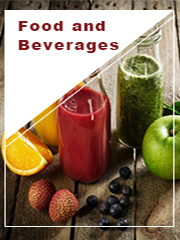TOP CATEGORY: Chemicals & Materials | Life Sciences | Banking & Finance | ICT Media

Download Report PDF Instantly
Report overview
The global Food Texturing Agent market was valued at US$ 23750 million in 2022 and is projected to reach US$ 29770 million by 2029, at a CAGR of 3.3% during the forecast period. The influence of COVID-19 and the Russia-Ukraine War were considered while estimating market sizes.
Food Texturing agents are food additives which are chemical substances, basically used to change the texture or mouthfeel of thefood by providing it with the characteristics such as creaminess, thickness and viscosity. They also play a key role in increasing shelf life of the product by giving it a stable structure.
This report aims to provide a comprehensive presentation of the global market for Food Texturing Agent, with both quantitative and qualitative analysis, to help readers develop business/growth strategies, assess the market competitive situation, analyze their position in the current marketplace, and make informed business decisions regarding Food Texturing Agent. This report contains market size and forecasts of Food Texturing Agent in global, including the following market information:
Global Food Texturing Agent Market, By Region and Country, 2018-2023, 2024-2029 ($ Millions) & (K MT)
Global Food Texturing Agent Market Segment Percentages, By Region and Country, 2022 (%)
Competitor Analysis
The report also provides analysis of leading market participants including:
Further, the report presents profiles of competitors in the market, key players include:
Outline of Major Chapters:
Chapter 1: Introduces the definition of Food Texturing Agent, market overview.
Chapter 2: Global Food Texturing Agent market size in revenue and volume.
Chapter 3: Detailed analysis of Food Texturing Agent manufacturers competitive landscape, price, sales and revenue market share, latest development plan, merger, and acquisition information, etc.
Chapter 4: Provides the analysis of various market segments by type, covering the market size and development potential of each market segment, to help readers find the blue ocean market in different market segments.
Chapter 5: Provides the analysis of various market segments by application, covering the market size and development potential of each market segment, to help readers find the blue ocean market in different downstream markets.
Chapter 6: Sales of Food Texturing Agent in regional level and country level. It provides a quantitative analysis of the market size and development potential of each region and its main countries and introduces the market development, future development prospects, market space of each country in the world.
Chapter 7: Provides profiles of key players, introducing the basic situation of the main companies in the market in detail, including product sales, revenue, price, gross margin, product introduction, recent development, etc.
Chapter 8: Global Food Texturing Agent capacity by region & country.
Chapter 9: Introduces the market dynamics, latest developments of the market, the driving factors and restrictive factors of the market, the challenges and risks faced by manufacturers in the industry, and the analysis of relevant policies in the industry.
Chapter 10: Analysis of industrial chain, including the upstream and downstream of the industry.
Chapter 11: The main points and conclusions of the report.